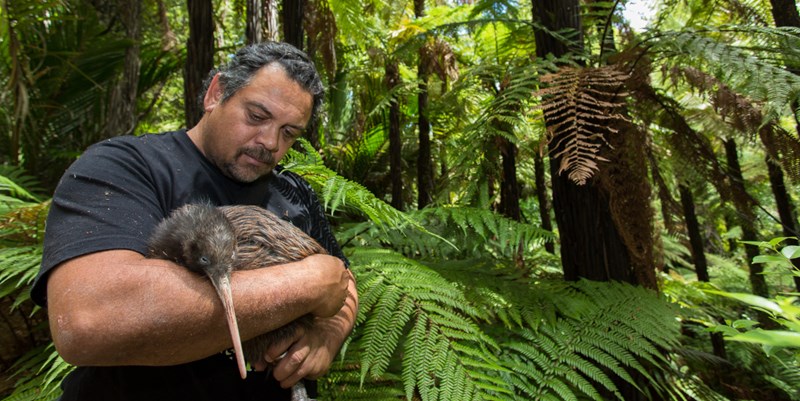
RMF receives international recognition for conservation work
Rayonier Matariki Forests has been recognised by the International Council of Forestry and Paper Associations (ICFPA) in its 2023 Sustainability Progress Report for its conservation work with the Eastern brown kiwi.
Rayonier Matariki Forests’ collaboration with Ōmataroa Rangitaiki No2 Trust to protect and nurture kiwi in its Bay of Plenty Ōmataroa Forest has seen huge gains in the kiwi population.
Rob Schoonderwoerd, Rayonier Matariki Forests Bay of Plenty District Forester, has been working with the Ōmataroa Rangitaiki No2 Trust for 20 years to set up and manage a predator control programme in Omataroa Forest.
“Kiwi live and thrive in plantation forests, along with many other rare and endangered birds, and we can carefully manage operations without adversely affecting kiwi habitat.
“More than 95% of kiwi chicks born in areas without predator control are killed before they reach breeding age so predator control is crucial to their survival. We know that up to 60% of the chicks survive in areas where predators, including stoats, rats, possums and feral cats, are controlled,” explains Rob.
Approximately 7,100 hectares of exotic production forest and a further 640ha of indigenous forest in the Bay of Plenty are now safe habitats for Eastern brown kiwi through the Ōmatoroa Kiwi Project.
When the project started in 2008 there were just 30 kiwi in the area but 20 years on and that figure has increased to over 120 birds. Eighty eggs have been collected, and a resulting 60 chicks released back into the wild.
More than 1500 traps across 8,000 hectares are regularly checked, cleared and reset in the ongoing mission to eradicate any threat to kiwi.
Ian Tarei, manager of the Ōmatoroa Kiwi Project, says with the ongoing support of Rayonier Matariki Forests a lot has been achieved.
“It is not just the funding and the manhours gifted to us by RMF, but their continued commitment and passion to protect and nurture our Eastern brown kiwi that has meant we have made serious inroads into growing the population,” says Ian.
“In addition to predator control Rob and his team have also supported an outdoor education programme focussing on forest visits where tamariki from local schools learn about their land, the different flora and fauna species and the importance of protecting them along with practical lessons in predator control and kiwi health checks and egg lifts. This is an incredible opportunity for the children to build skills and knowledge as future guardians of the land, resources and taonga.”
The education programme is now in its fifth year.
ICFPA encompasses some 463 million hectares of Forest Stewardship Council and/or Programme for the Endorsement of Forest Certification (PEFC).
